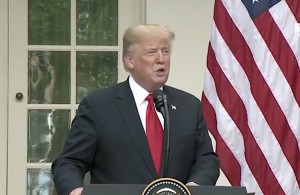
Toyota's Masayoshi Shirayanagi noted that increased trade tensions and U.S. tariffs will eat into Toyota's bottom line.
Toyota Motor Corp. rode a wave of increased sales and decreased costs to a 7.2% increase in net income in its fiscal first quarter of 2018. Revenues also increased 4.5% during the quarter.
The company also announced it was ending its partnership with Isuzu Motor Ltd. The companies built diesel engines, but with oil burners falling out of favor, replaced by EVs and potentially fuel cells down the road, the two sides will split.
Toyota owns a 5.89% stake in Isuzu.
The Japanese automaker reported net income of 657.3 billion yen, or $6 billion, on revenue of 7.4 trillion yen, or $67.5 billion, compared with year-ago results of 613 billion yen in net income on revenue of 7.1 trillion yen.
(Automakers watch July sales get hammered. Click Here for the story.)
Operating income for the company increased from 574.2 billion yen to 682.6 billion yen: a 108.3-billion yen jump, while income before income taxes was 813.8 billion yen. The biggest factors affecting the increase included a decrease in expenses of 60 billion yen and an increase of 45 billion yen in marketing activities, Toyota noted.
The company has been looking to tighten its belt wherever possible and Senior Managing Officer Masayoshi Shirayanagi noted the impact of those efforts.
“As for the fixed cost reduction activities, we are steadily making progress toward achieving our challenge-level target, which we are determined to achieve by the end of this fiscal year through further efforts across regions,” he said.
However, selling more vehicles worldwide didn’t hurt either at the company. The automaker sold 22,516 more vehicles during this quarter than the same period in 2017 for a total 746,135 units, making it Toyota’s largest market by far.
Operating income in the U.S. fell 13.2% to 78.3 billion yen due to increased marketing spending. Officials noted that it was going to be increasingly difficult to keep profits high in the U.S. market with the Trump administration’s handling of trade relations.
(Click Here to see why auto suppliers are growing pessimistic about near-term prospects.)
Its home market of Japan is second-largest and sales totaled 510,339 units, a decrease of 33,884 units. However, its operating income, excluding the impact of valuation gains/losses from interest rate swaps, increased by 76.2 billion yen to 396.1 billion yen.
Vehicle sales and operating income rose in Europe and Asia while in other in other regions like Central and South America, Oceania, Africa and the Middle East, sales fell, but operating income increased.
Financial services operating income decreased by 1.7 billion yen to 73.5 billion yen, including a loss of 8.7 billion yen in valuation gains/losses from interest rate swaps. Excluding valuation gains/losses, operating income increased by 7.1 billion yen to 82.2 billion yen.
Despite sales increases in most of its global markets in Q1, Toyota revised its consolidated vehicle sales forecast from 8.95 million units to 8.9 million units, in consideration of the latest sales trends worldwide. Much of that is expected to be a result of an expected drop in sales in the U.S. in the second half of this calendar year, officials noted.
(To see more about the Toyota e-Palette Concept, Click Here.)
TMC maintains the consolidated financial forecasts for the fiscal year. Based on an exchange rate assumption of 106 yen to the U.S. dollar and 126 yen to the euro, TMC now forecasts consolidated net revenue of 29.0 trillion yen, operating income of 2.30 trillion yen, income before income taxes of 2.45 trillion yen, and net income of 2.12 trillion yen.


